SkatePlaza autogestionada “Los Planos”, Badalona from david juarez on Vimeo.
Alberto, Oscar y Sergi nos cuentan la historia de la SkatePlaza que han estado autoconstruyendo en el Parque de Les Muntanyetes de Badalona
“Hello, we’re Albert, Oscar and Sergi.
We’re here to talk about “Muntanyetes Park”, and particularly “Los Planos Skate Plaza”, the park where we skate. They started making the park in 2003, it looked good, it had a few good slopes, and we started skating.
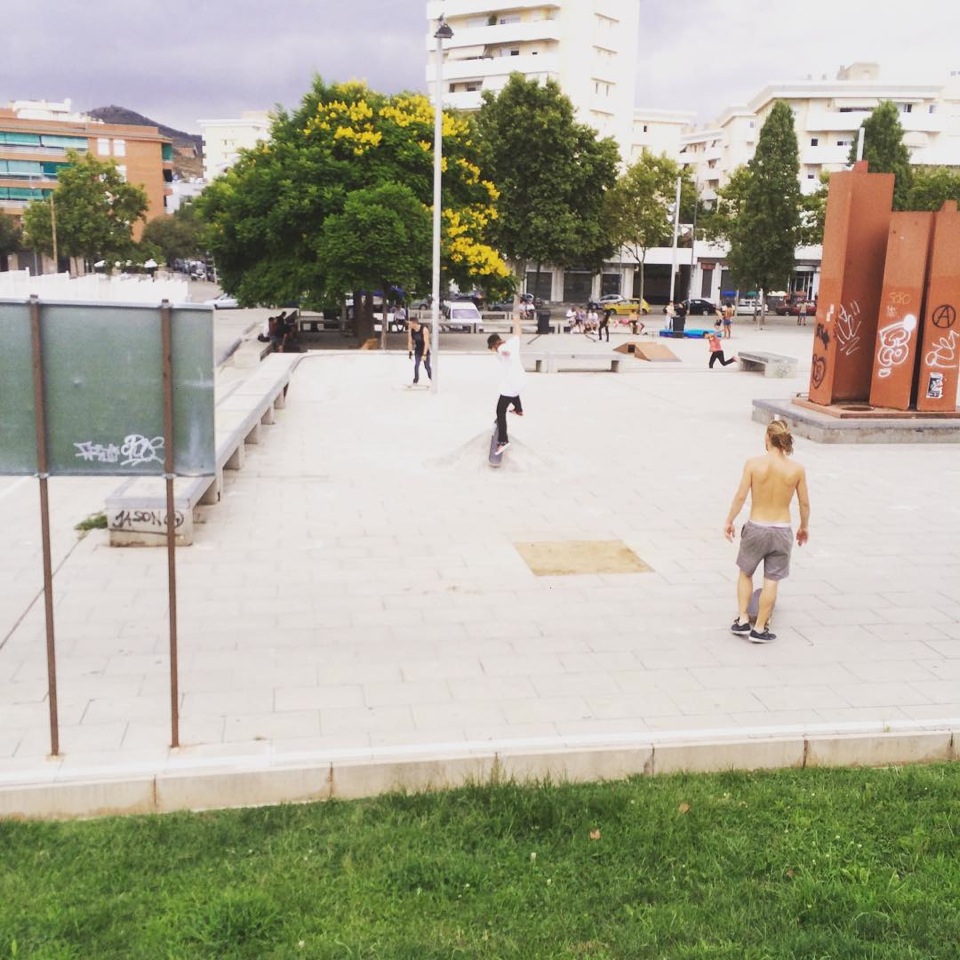
We made module guides because we do a street circuit and we take the modules to the park on Fridays. We call them “Module Fridays”.
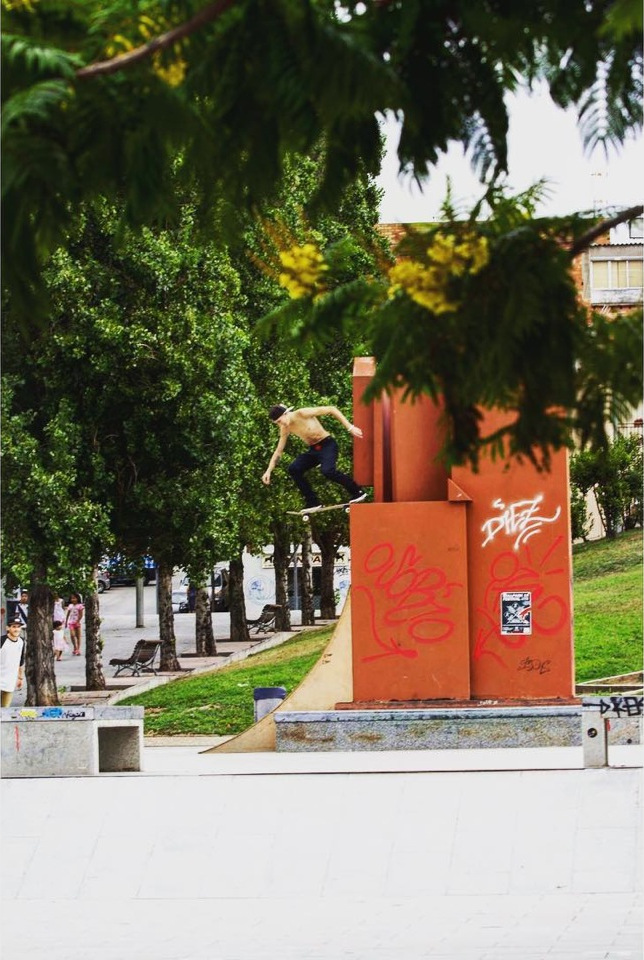
The town council banned skating; the locals complained because they saw a lot of skaters, and they damaged the curbs… the locals didn’t like it, they organised some protests to stop us, they moved the benches a few times and nailed them to the floor so we couldn’t move them, they put a handrail at the top of the slope and stoppers on the three levels of the square so that we couldn’t skate the ramp.

After the last elections 4 or 5 years ago they changed the park. They took the lake away and added a playground and flat skating rink (old-style, like the ones where kids used to go with rollerskates).
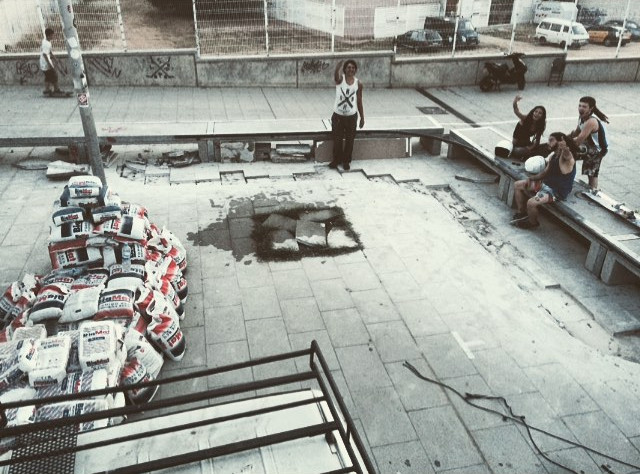
So we asked them for a bowl, some more infrastructure for skating (at the site of the flat skating rink).

We got together and founded a sports association called Los Planos, to talk to the town council, request building permits, organise classes, hold events…
By creating the club, we got the all-clear to skate in the park where we had been banned before. And we managed to make it a shared-use area, for skating and for use by the locals. Lines were painted on the ground to separate the skating area from the non-skating area.
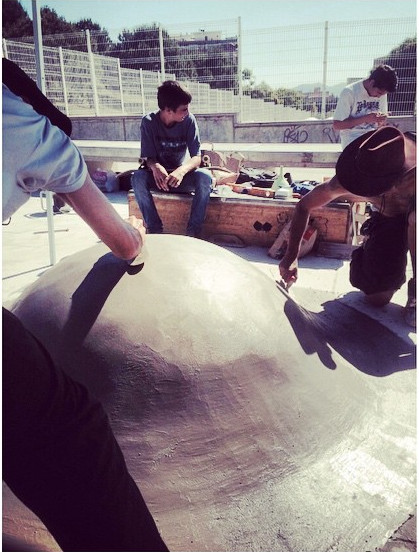
That’s where we’ve been working: we put metal edging on the benches to avoid damaging them.
After this experience, we’ve talked to the town council and built many different things over the past four years.

The last things were two waves and a quarter curve. We still want build a bowl. We’ve but handrails on the stairs, the floor, etc… and different modules.
It’s a self-managed space, so we don’t ask the town council for permission. So every time we get our hands on a handrail or another element we go to the workshop after work, and we place the handrail in the park at night. They haven’t stopped; the park has kept growing over the past five years. There’s always activity, they build things, add new modules or change existing ones because they use recycled materials that wear out, they’re not always top-quality.
In these last changes we’ve had the help of skaters from other parks, like La Marbella, Kanki, Nico…
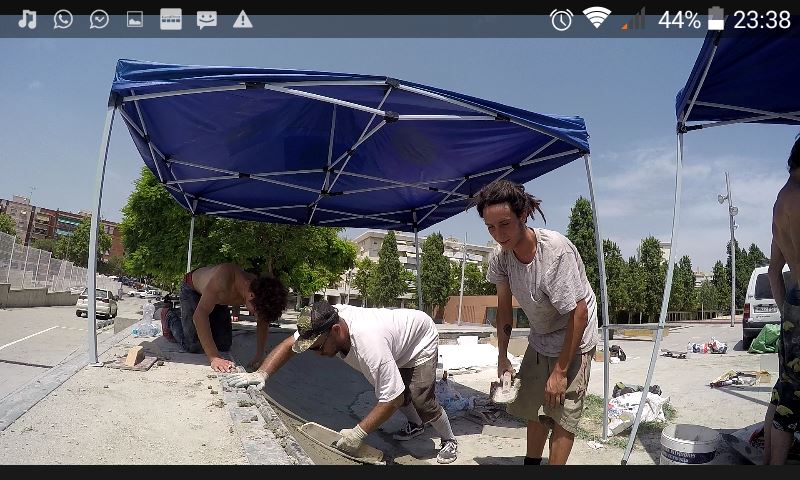
We use a mix of fixed elements and mobile elements. The mobile elements allow for more play, they can be moved around depending on the moment. There’s one element that interacts with the sculpture in the square, and bring it in and out so it won’t wear out. Sometimes we used to leave wooden ramps outside, but they soon wore out.
Now there are more than 15 modules.

We’d tell anybody who wants to do something similar to set up a youth association, a club, or a collective, and go and talk to their town council or the coordinator of the site, and suggest building elements in the places they would like to space. We’d tell them to start designing modules. In some places we started illegally, but it’s better to take the legal option. Because you’re putting all that effort in, so at least you know you have the support, and you won’t get fined for modifying a public space, or have it demolished after working so hard to get the materials and build it.
People who want to do things should do them. Or collaborate in other places first, learn how to do it, and then start in their own neighbourhoods.
It’s really fulfilling. You finish and look at it and you feel good.
In this case, we didn’t have need homologation or anything. When we spoke to the municipal architect he said that he didn’t know anything about skating and he gave us a lot of scope to do whatever we wanted.
They gave us concrete and 400 euros, and we built around 17 m2 of high-quality modules, with sufficient thickness. That’s what a company would charge per square meter for any urban skating module. We did it for the love of it.”




